NSB608: Wound Care in Practice Quiz Assignment Help

Question
NSB608: This is a Queensland University of Technology assignment that requires students to complete a series of modules and answer short-answer questions related to wound care in clinical practice. The assignment aims to enhance students’ understanding of skin care, various types of wounds, and wound management strategies. Students must engage in online modules, participate in discussions, and conduct further readings on skin integrity and wound care. The assignment is divided into seven modules, with each module focusing on specific aspects of wound care.
Solution
To provide Wound Care in Practice Quiz Assignment Help, our experts conduct thorough research and provide detailed guidance to help students effectively address each question. The structured approach taken by our subject matter experts ensures a comprehensive understanding of wound care principles, supported by current evidence from the literature.
Question 1
The question asks students to discuss and explain one of the functions of the skin. Our OAS experts have identified the skin’s role as a barrier that protects the body from pathogens, chemicals, and physical injuries, highlighting its importance in maintaining overall health and preventing infections.
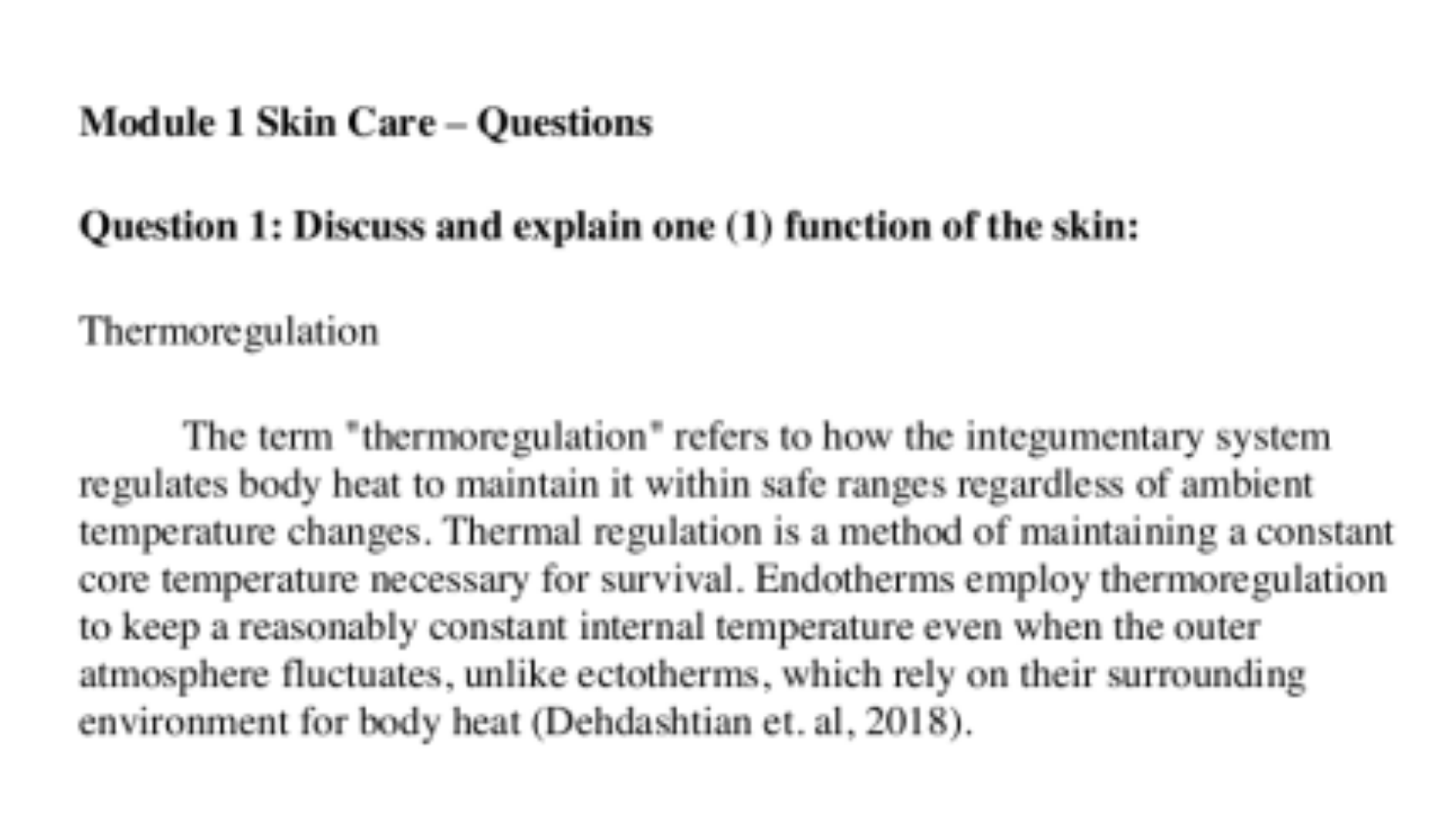
Question 2
In the next question, OAS experts have explained that decreased collagen production is a typical intrinsic change, leading to reduced skin elasticity and firmness due to the natural aging process.
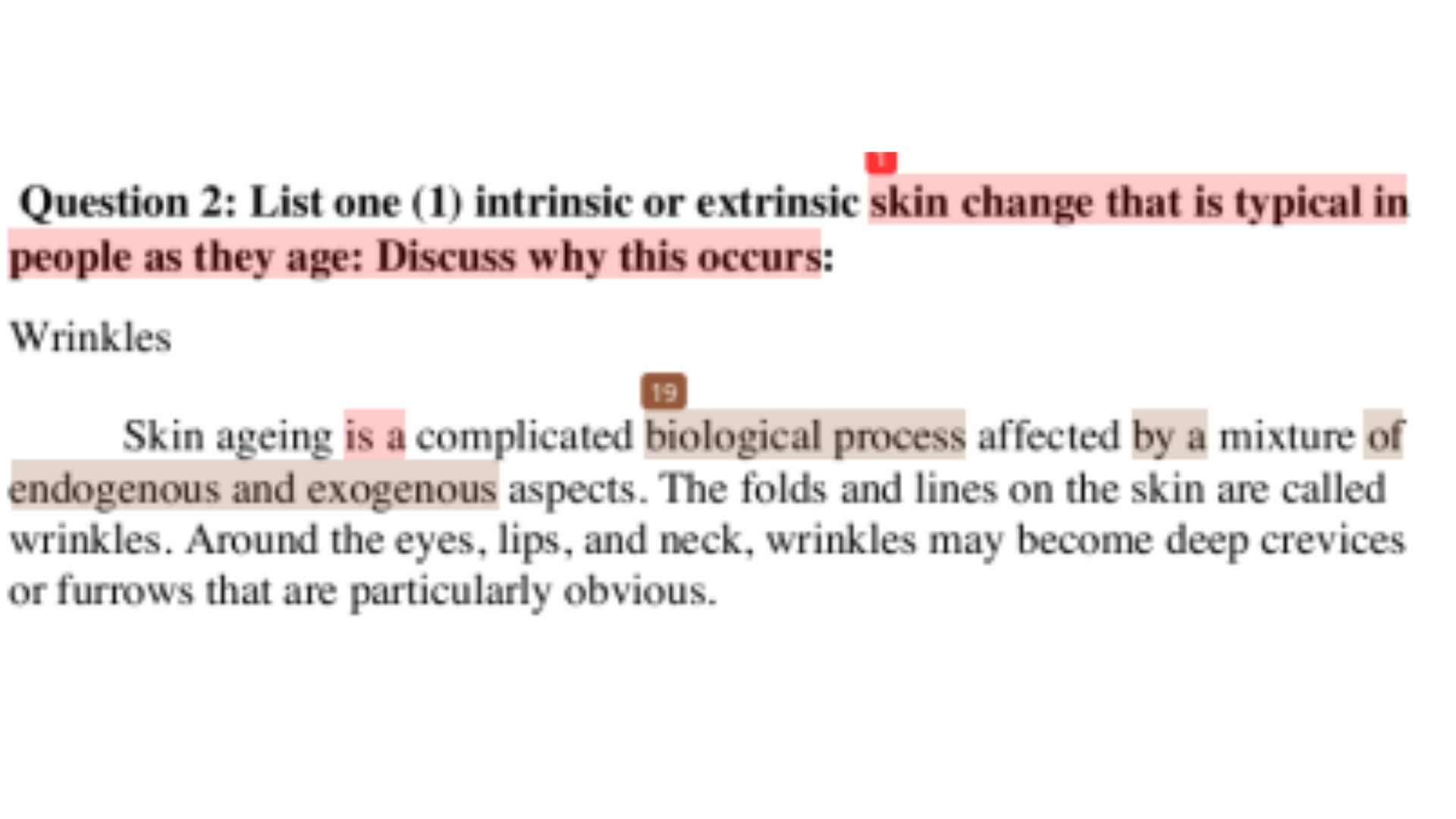
Question 3
Here, our experts have chosen primary intention, explaining that it involves the direct closure of a wound with sutures, staples, or adhesive strips, resulting in minimal scarring.
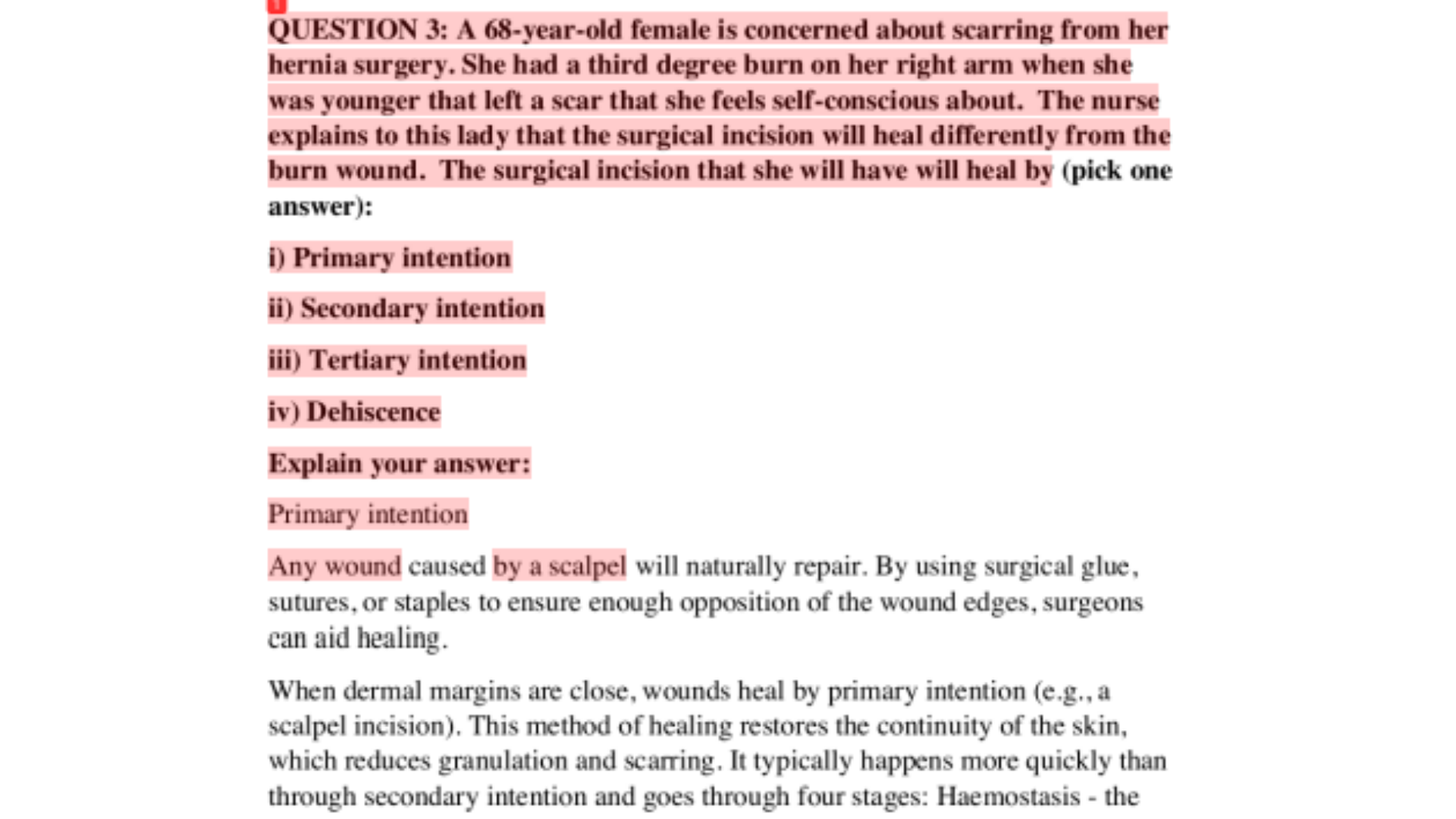
Pursuing MSc Wound Healing and Tissue Repair and need assignment help for your Nursing Assignment? Call us at +61 871501720 today!
Question 4
Following this, the student is required to discuss why neonates are at risk of skin injuries. Our OAS experts have highlighted that neonates have thinner, more delicate skin due to an underdeveloped stratum corneum layer, making it more susceptible to injuries.
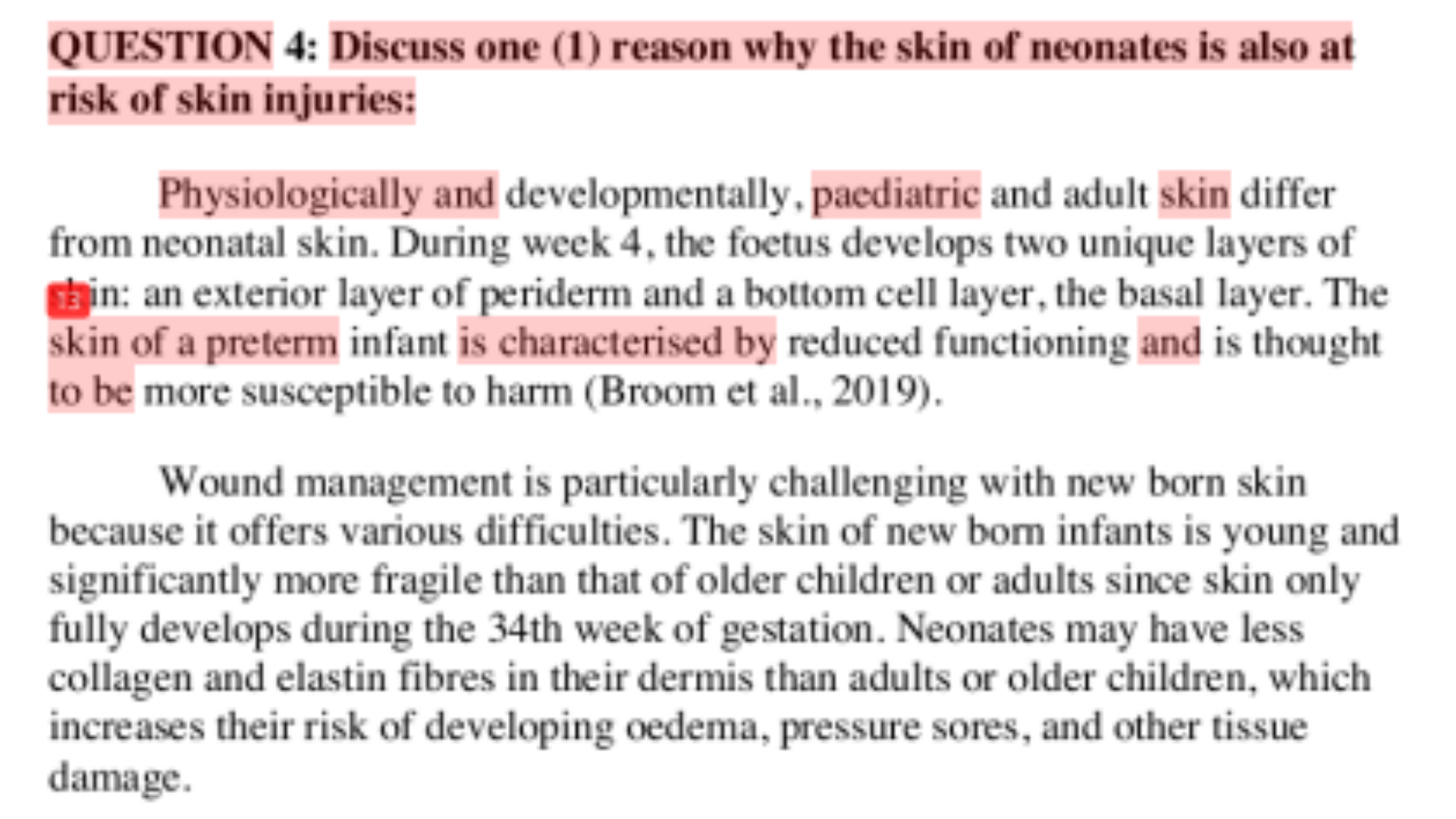
Question 5
This question asks for a risk factor for skin tears. Our experts have identified advanced age, justifying that older adults have fragile skin due to decreased collagen and elastin.
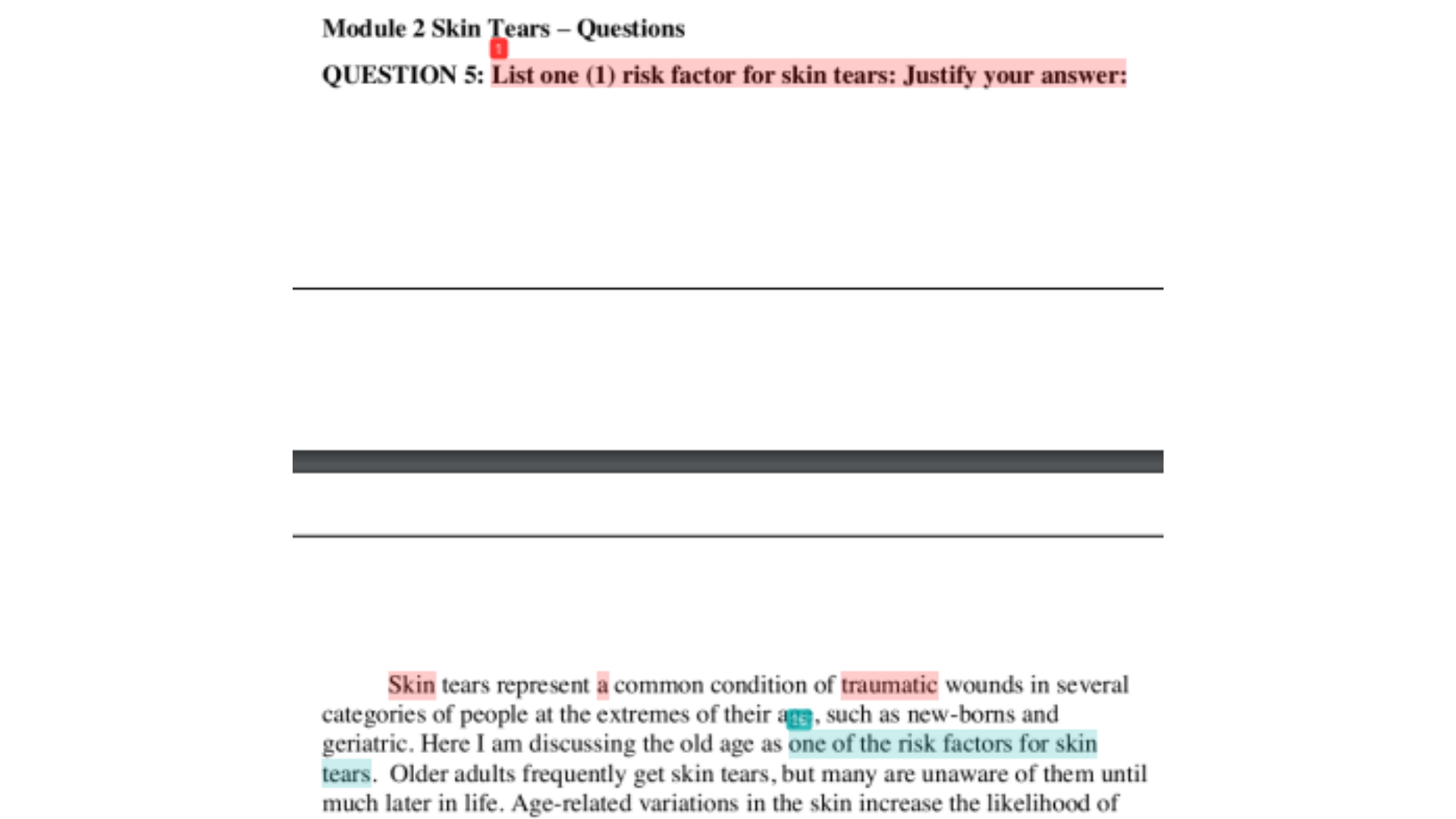
Question 6
Next, this question requires categorizing a skin tear using the STAR system. Our experts have chosen Category 2a, explaining it involves partial tissue loss with a viable flap.
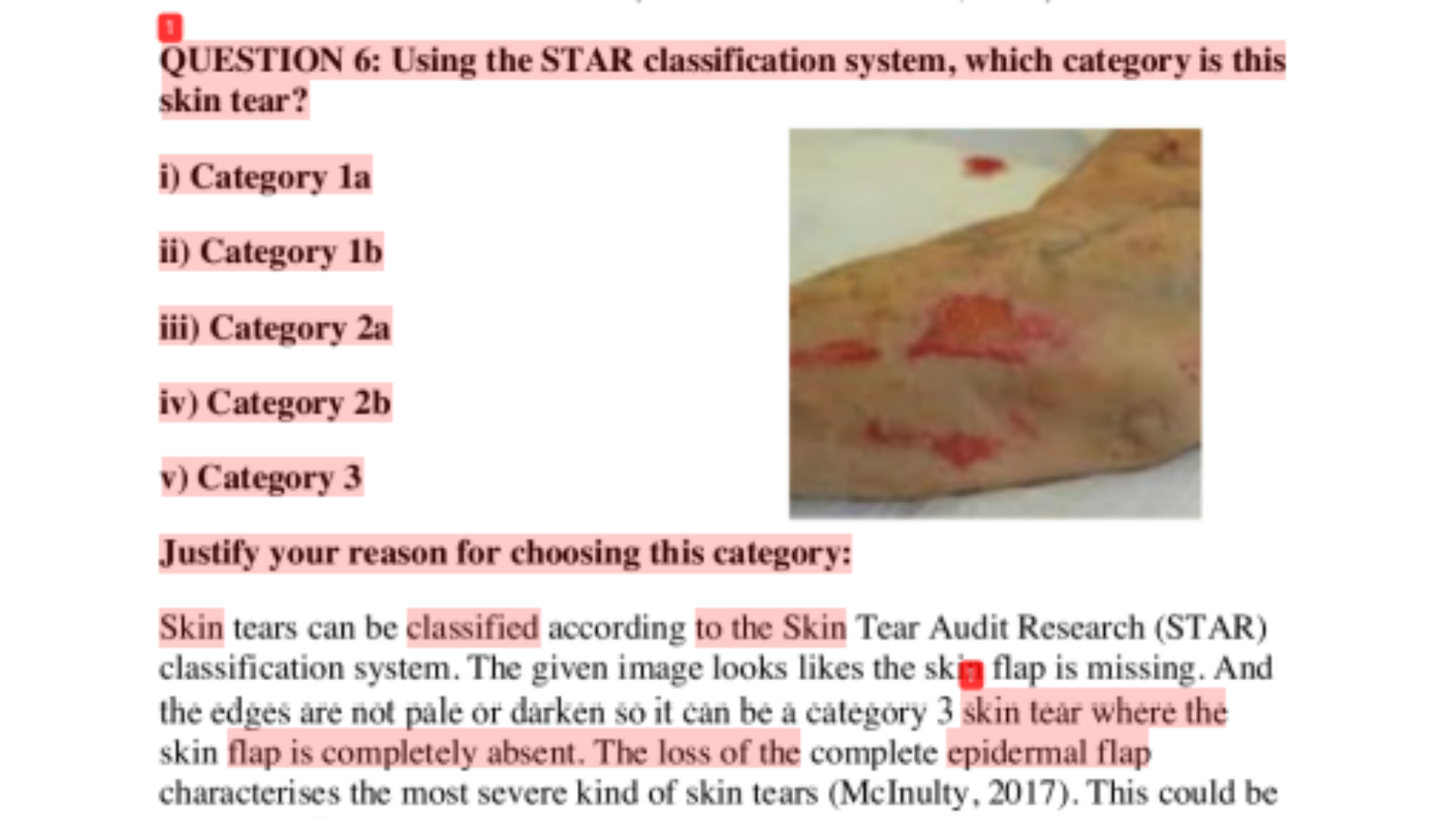
Are you also looking for the best Nursing Assignment Help in Brisbane? Let us help you. Reach out today- onlineassignmentservices1@gmail.com.
Question 7
This is followed by recommendations by our experts using protective padding to reduce friction and shear forces, especially in elderly patients.
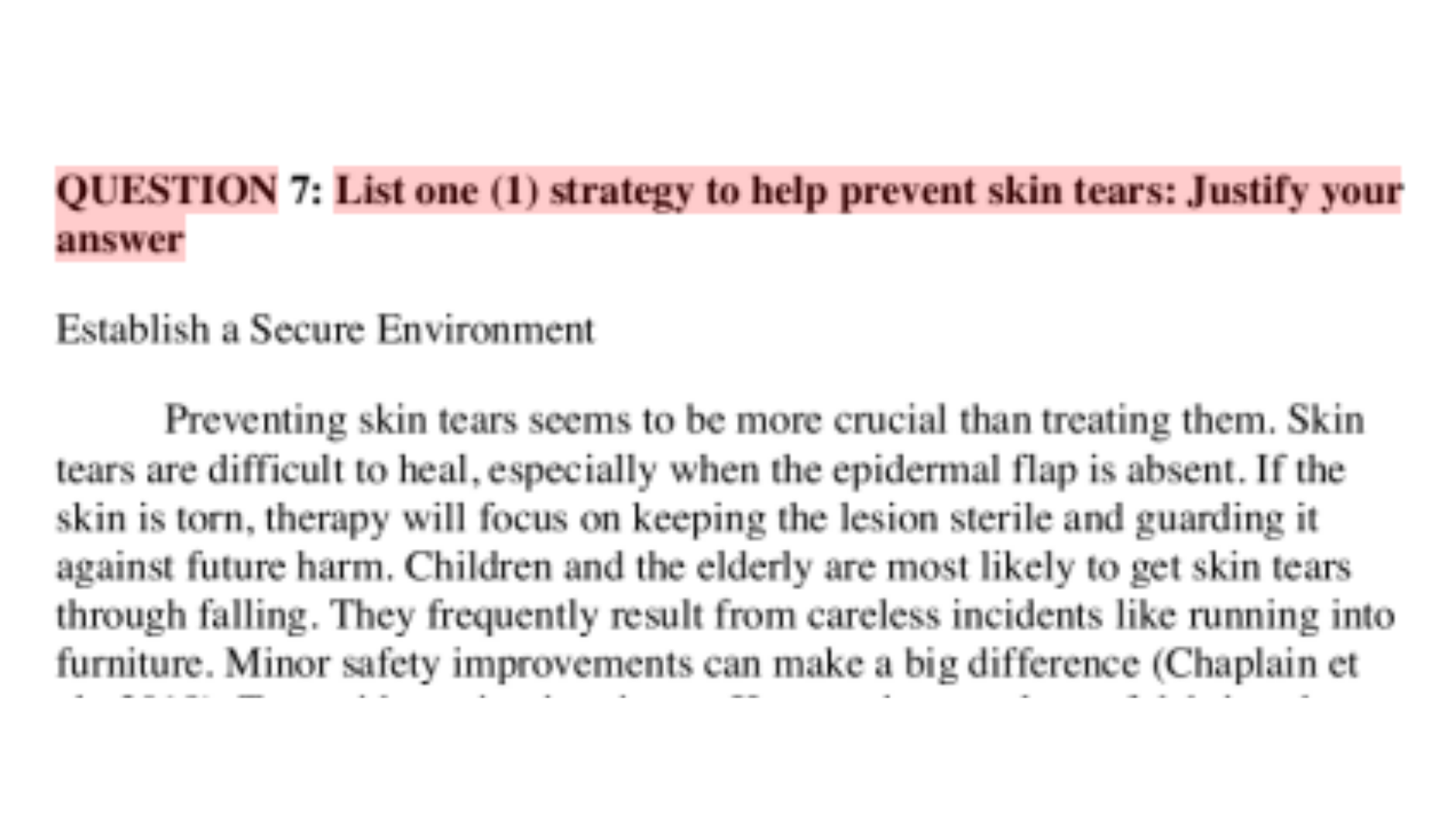
Question 8
his question asks for the cause of venous leg ulcers. Our experts identify high blood pressure in the veins, leading to venous insufficiency and poor circulation. You can read a snippet of this section below:
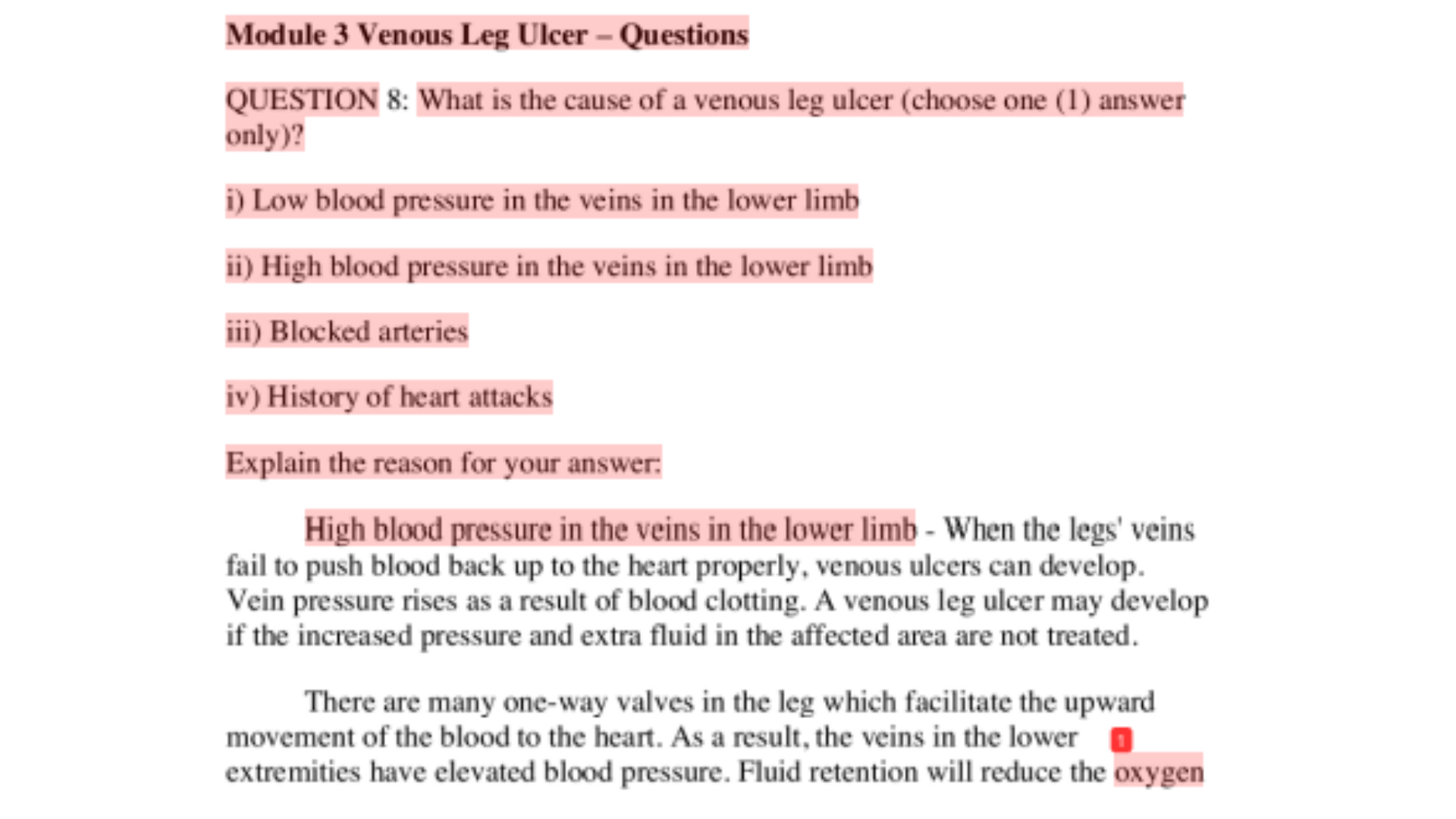
Question 9
The next question requires identifying whether a given example is a typical venous leg ulcer and justifying the answer.
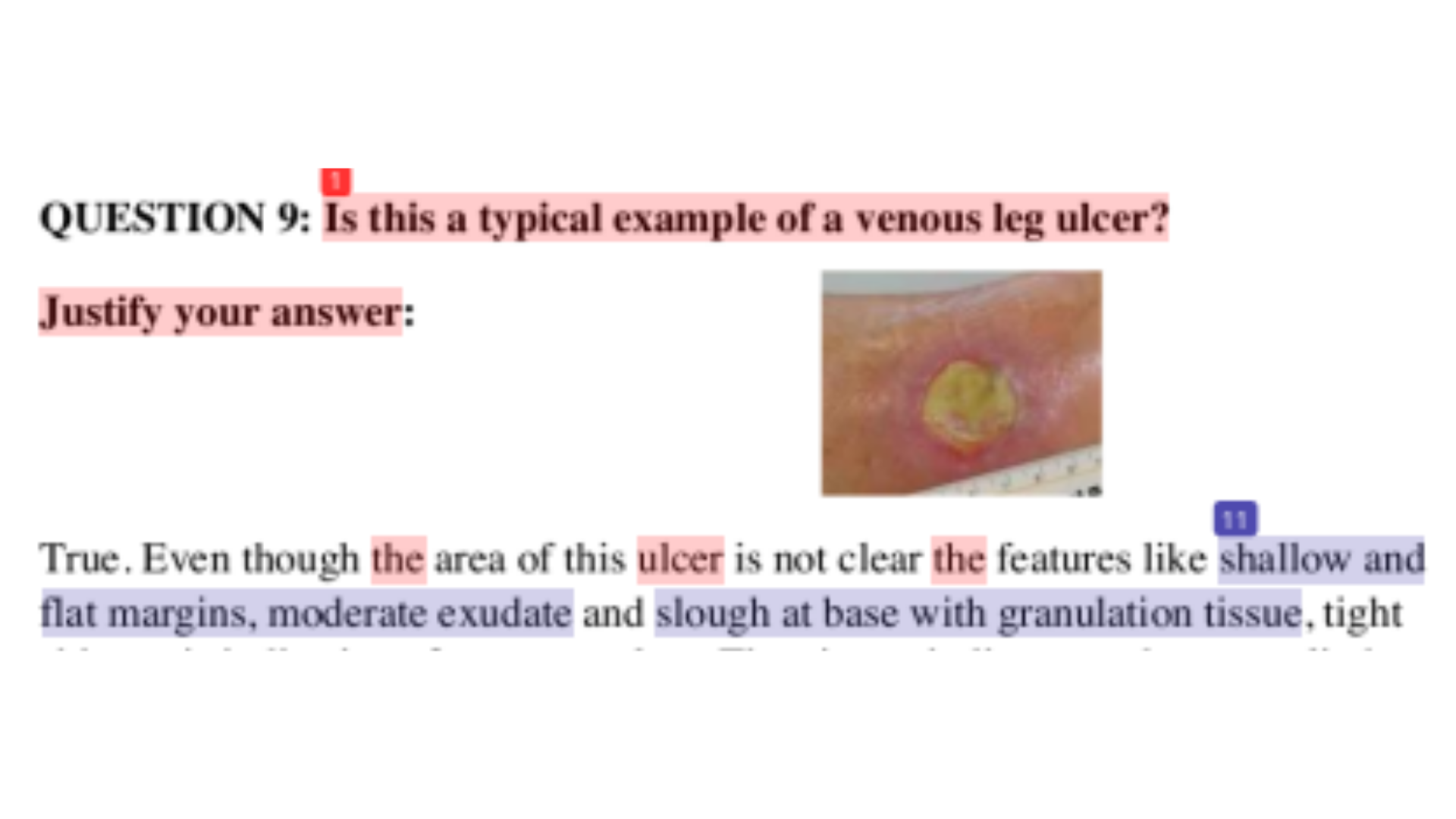
Stuck with your NSB608 Wound Care in Practice Quiz Assignment and looking for help? WhatsApp us at +447700174710 today to get our seasonal discount offers of up to 30% off.
Question 10
To answer this question, our experts have explained that compression therapy applies pressure to the lower limb, reducing venous hypertension, improving blood flow, and promoting ulcer healing.
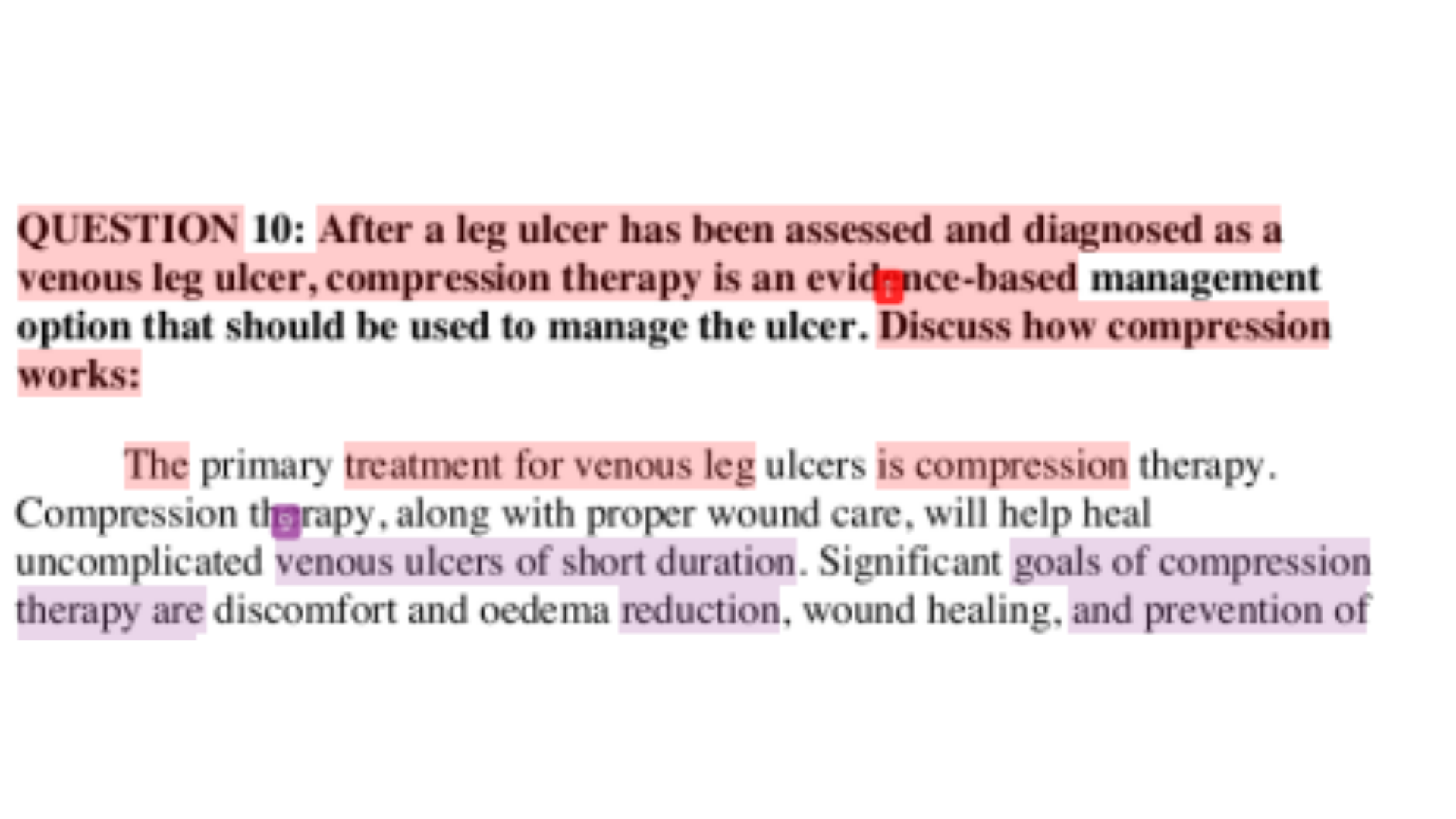
Question 11
In this section, our experts have identified that arterial leg ulcers typically have a punched-out appearance with well-defined borders, explaining that this occurs due to inadequate blood supply, leading to tissue ischemia and necrosis.
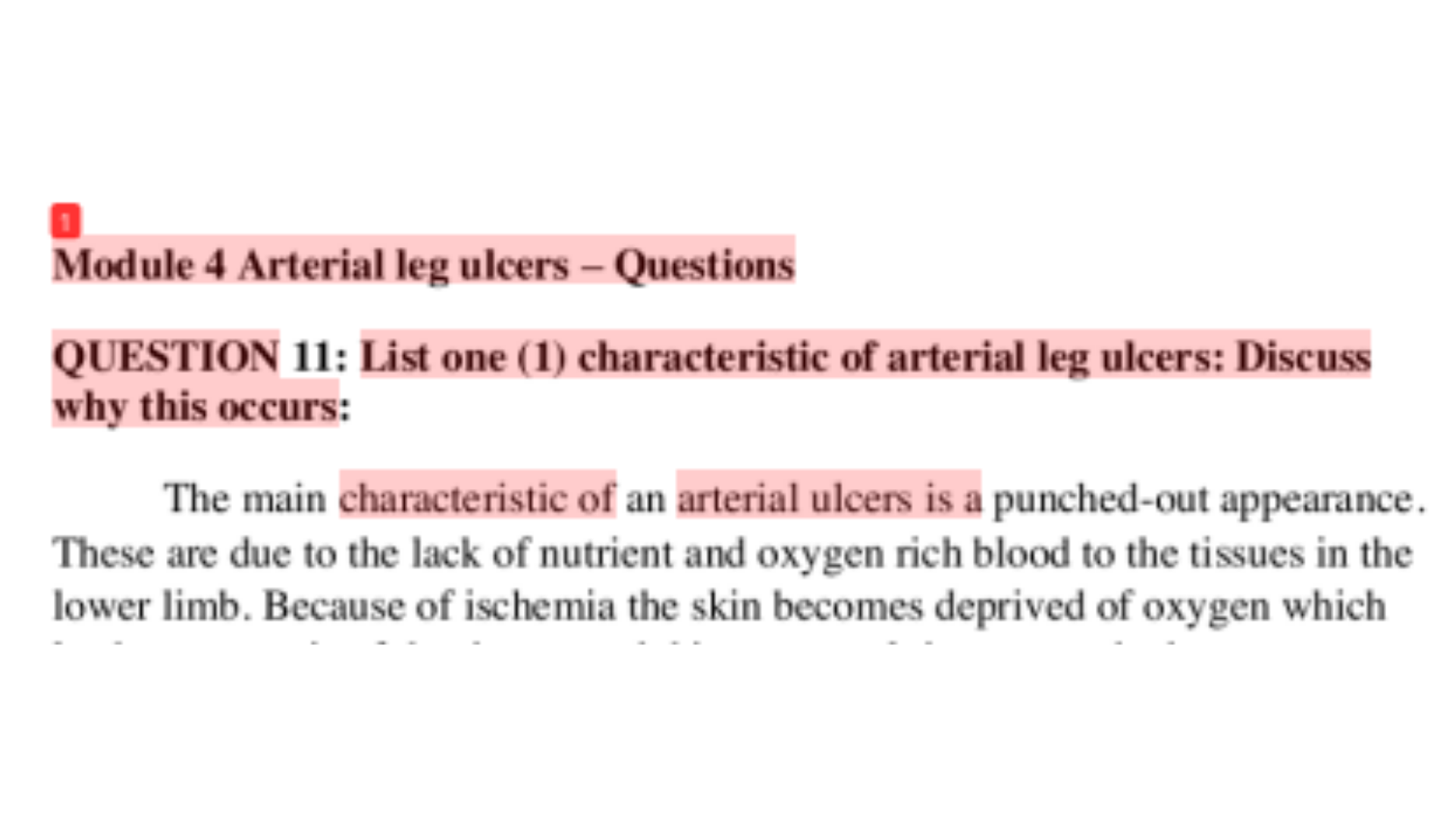
Question 12
In the following question, our experts have recommended revascularization procedures, such as angioplasty, explaining that they restore blood flow to the affected area, promoting healing by increasing oxygen and nutrient supply to ischemic tissues, a part of which you can read below:
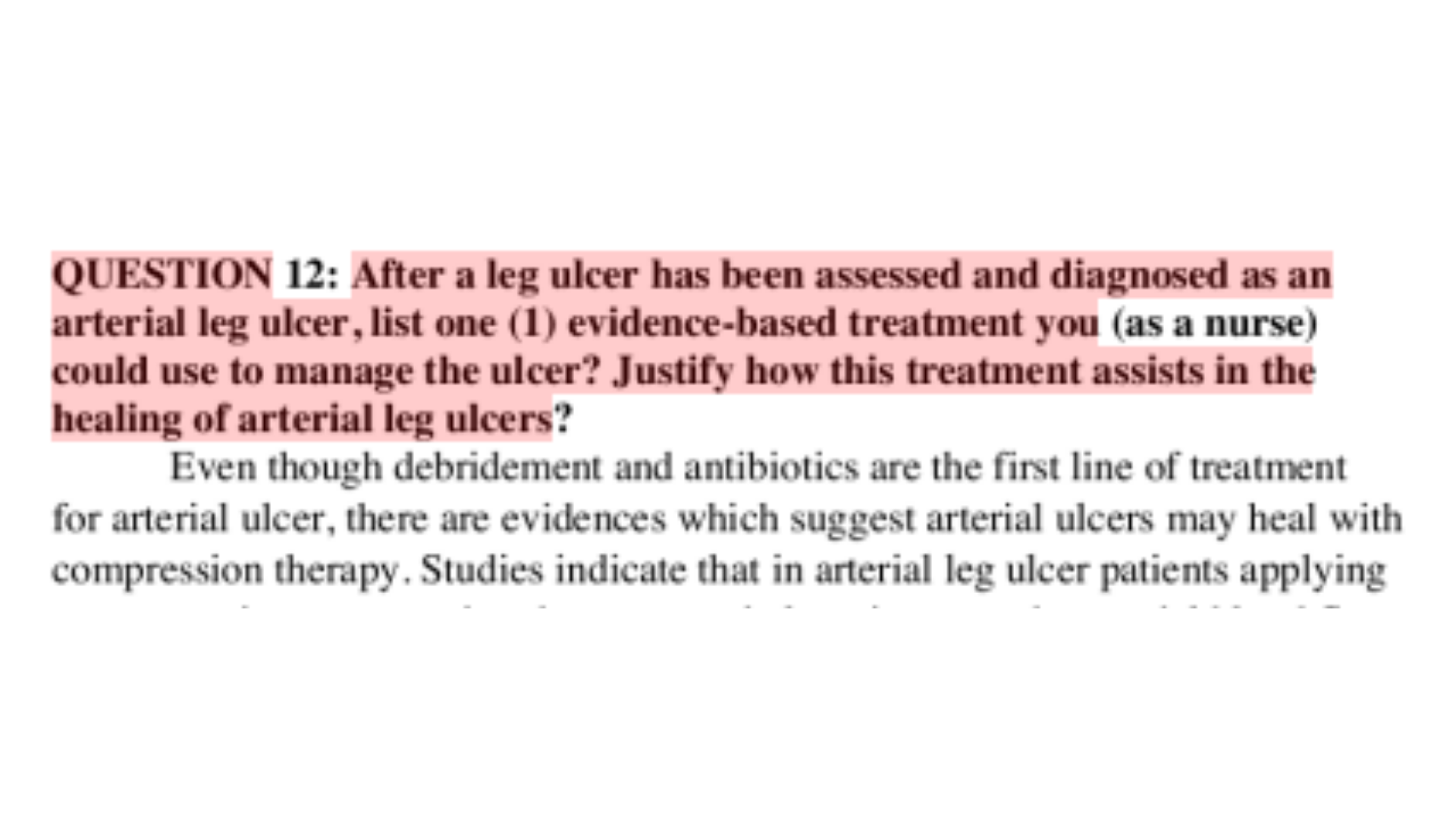
Book MSc Wound Healing and Tissue Repair Assignment Help from OAS now. Call us at +61 871501720.

Question 13
This question demands the student to discuss a prevention strategy for arterial leg ulcers and its justification, for which our experts have recommended smoking cessation as a crucial prevention strategy:
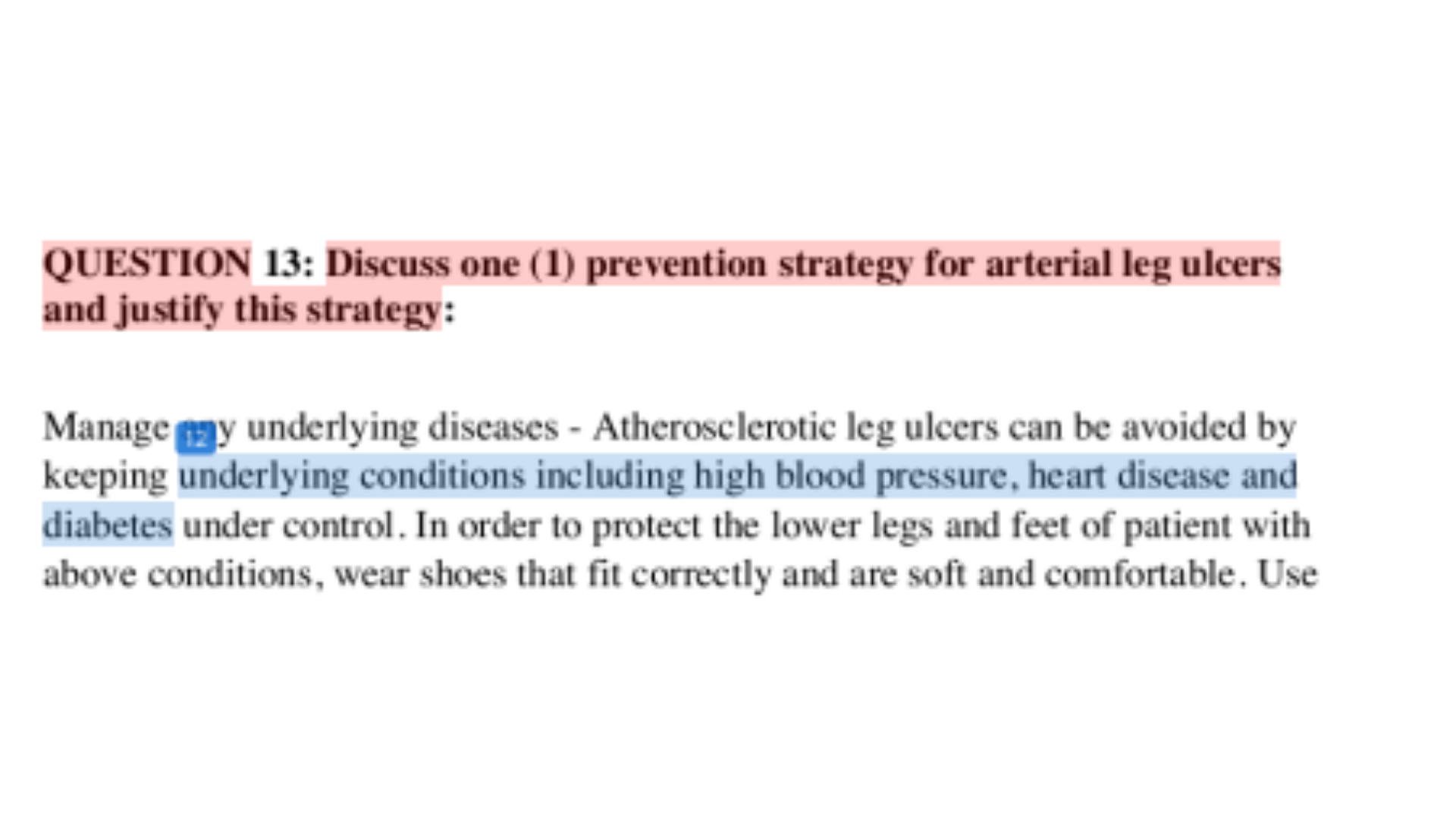
Question 14
The question asks whether a given example is a typical diabetic foot ulcer and justifying the answer. Our OAS experts have confirmed it is true, explaining that diabetic foot ulcers commonly occur on pressure points, such as the soles of the feet, and are often associated with neuropathy and poor wound healing.
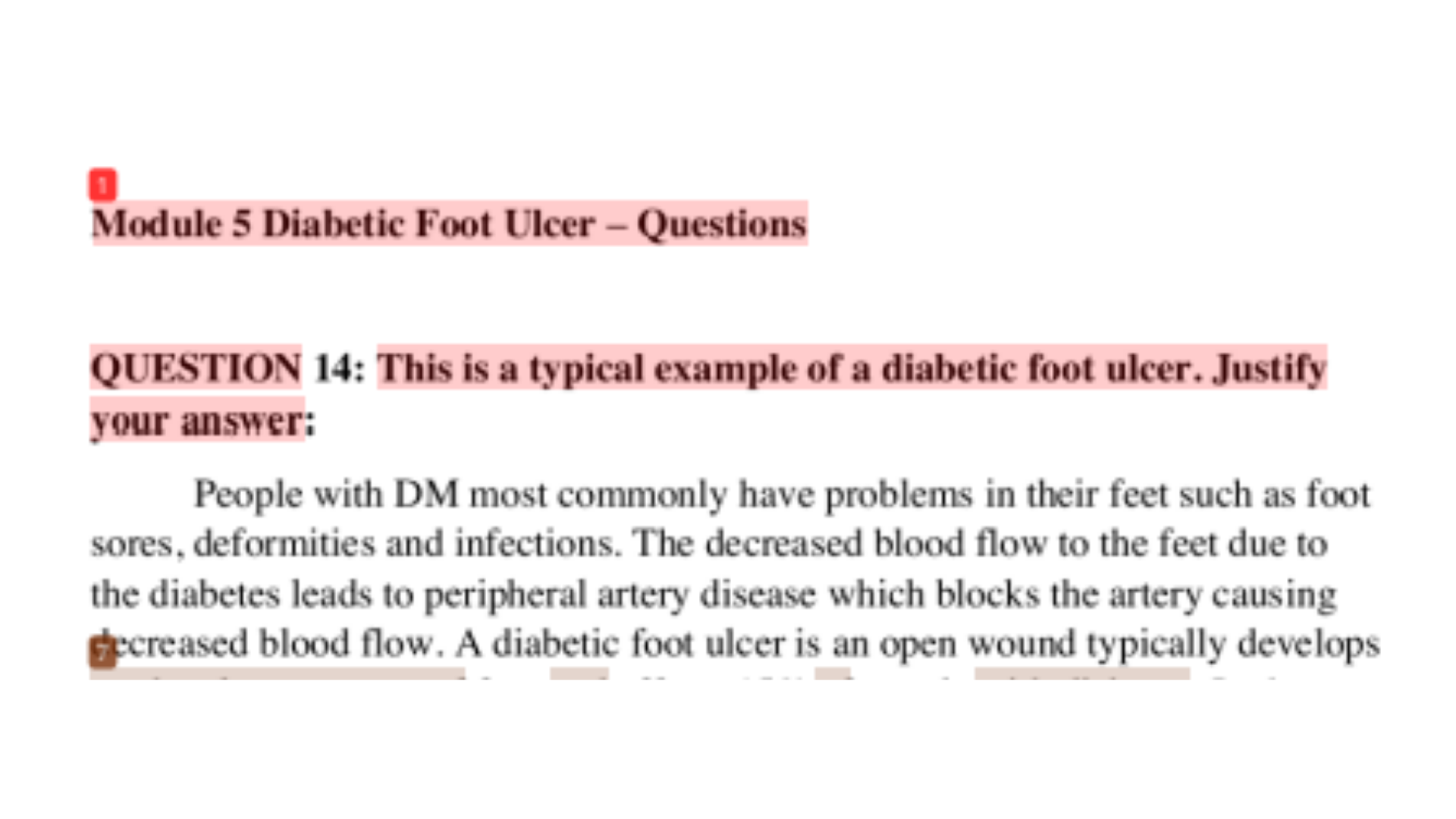
Question 15
Next, a podiatrist have been identified explaining that they provide specialized foot care, debridement, and offloading techniques to prevent ulcer progression and promote healing.
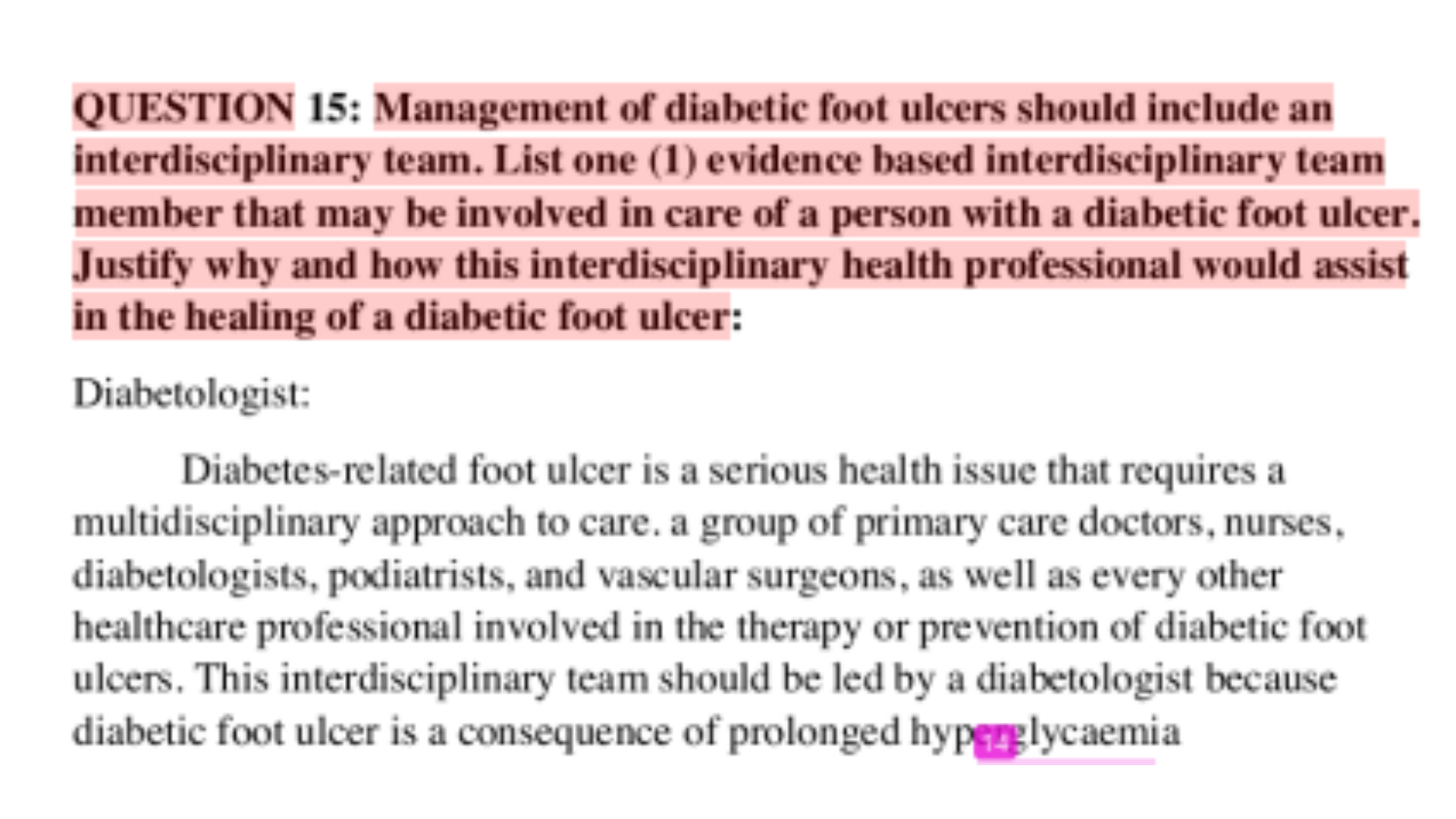
This is only 50% of the Queensland University Technology Assignment Help provided by our experts. To know more, WhatsApp us at +447700174710.
Question 16
This is followed by a discussion on how increased neuropathy occurs with diabetes, leading to a loss of sensation and increasing the risk of unnoticed injuries and subsequent ulceration.
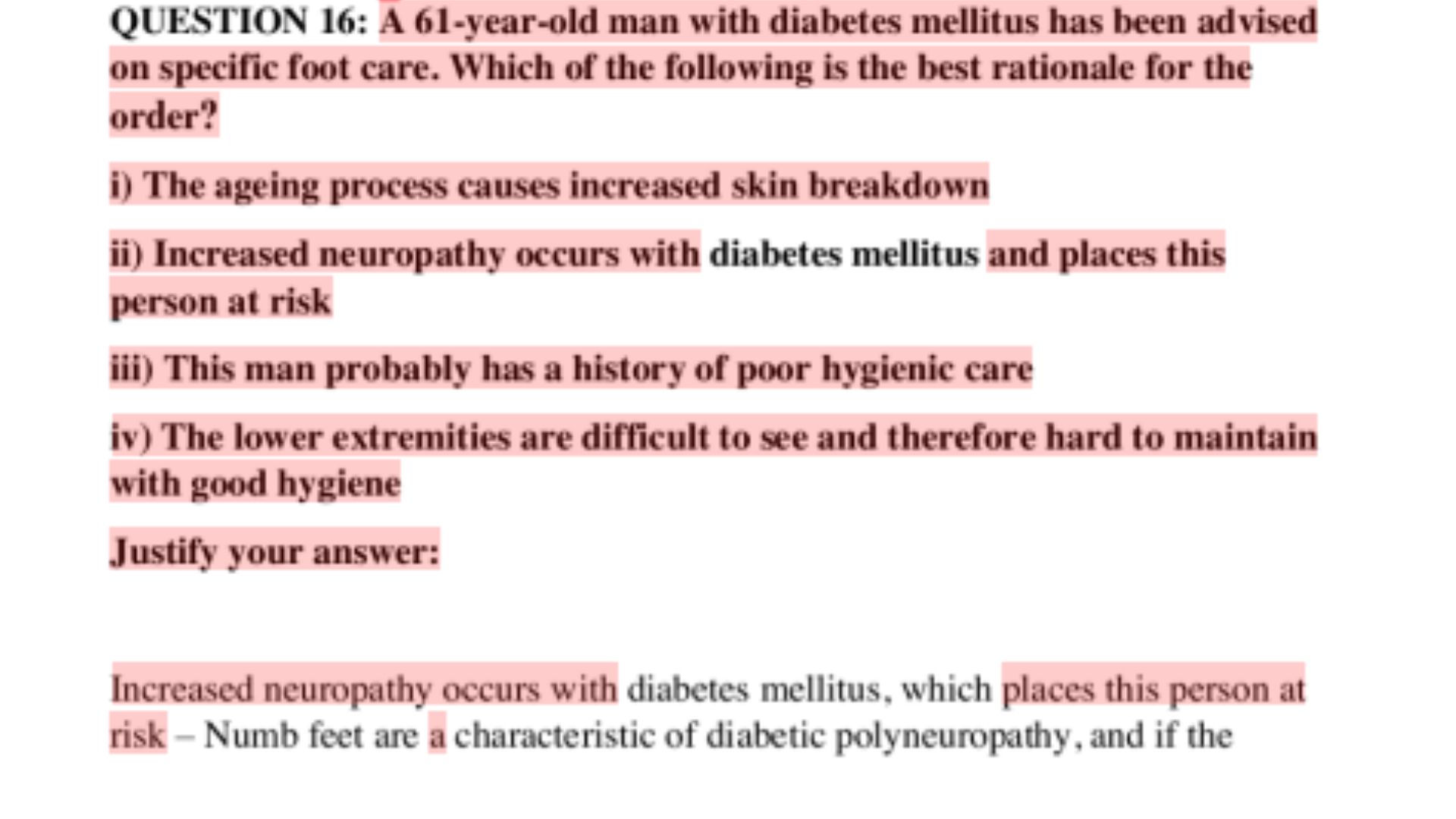
Question 17
In this section, our experts explain that prolonged pressure restricts blood flow, causing tissue ischemia and necrosis.. You can read a snippet of this section below:
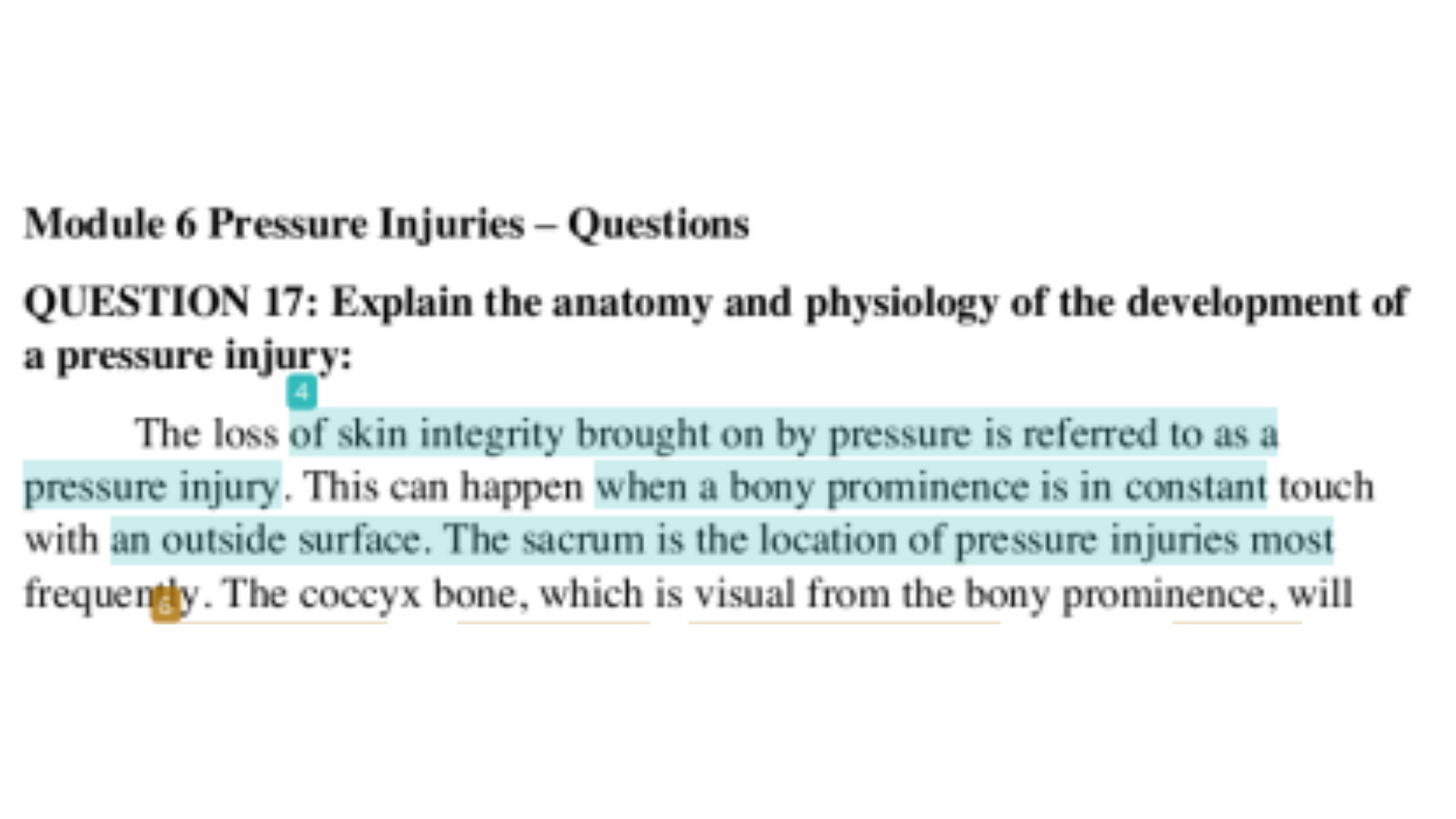
Question 18
This question asks for the differences between incontinence-associated dermatitis and pressure injuries. Our experts explain that dermatitis is caused by moisture exposure, while pressure injuries result from sustained pressure and reduced blood flow.
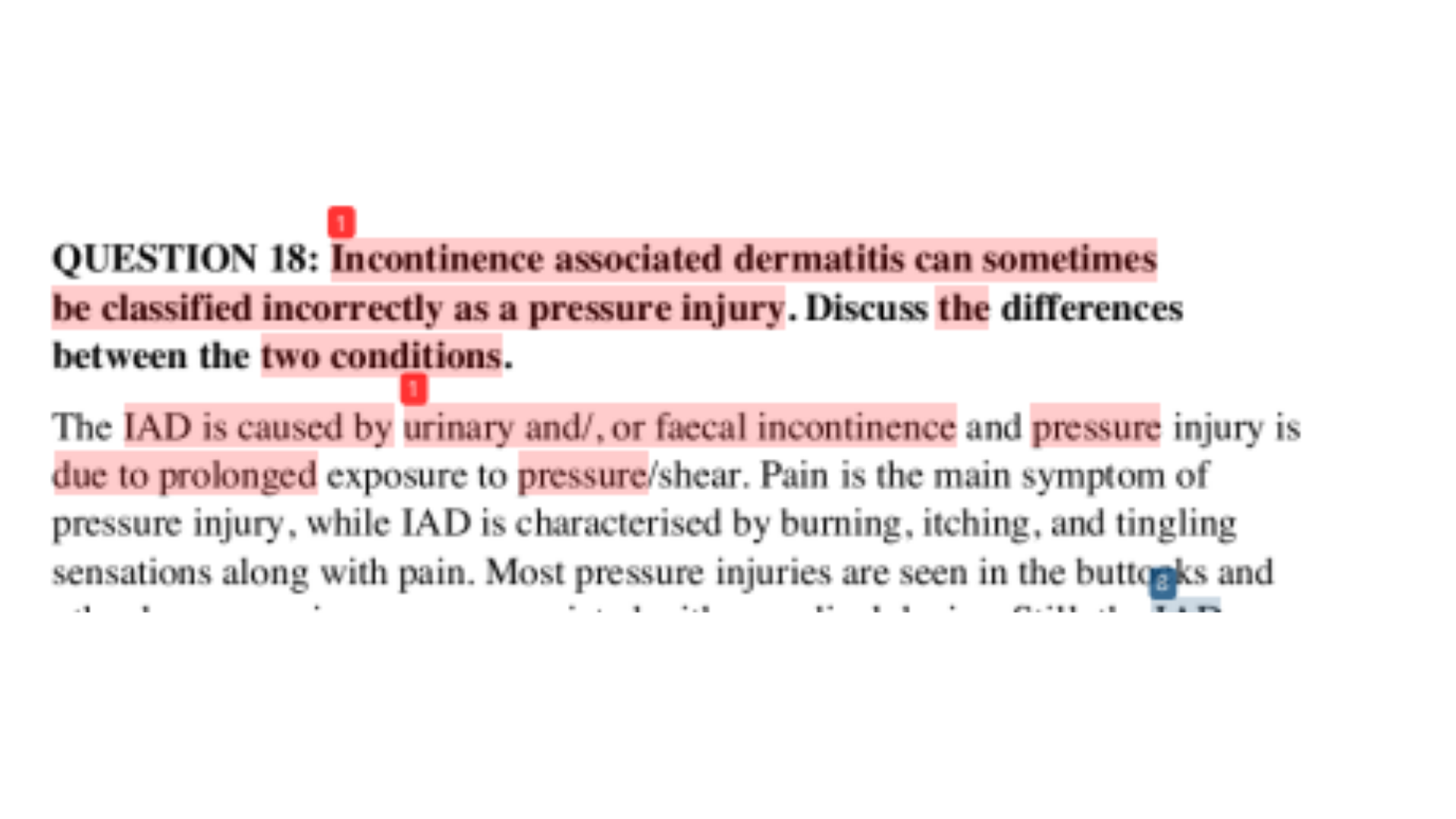
Want to get Wound Care Test Questions Help in Australia at an affordable price? Call us at +61 871501720.
Question 19
This question asks which scale is not used for pressure injury risk assessment. Our experts identify the Glasgow scale, explaining it is used for assessing consciousness, not pressure injuries.
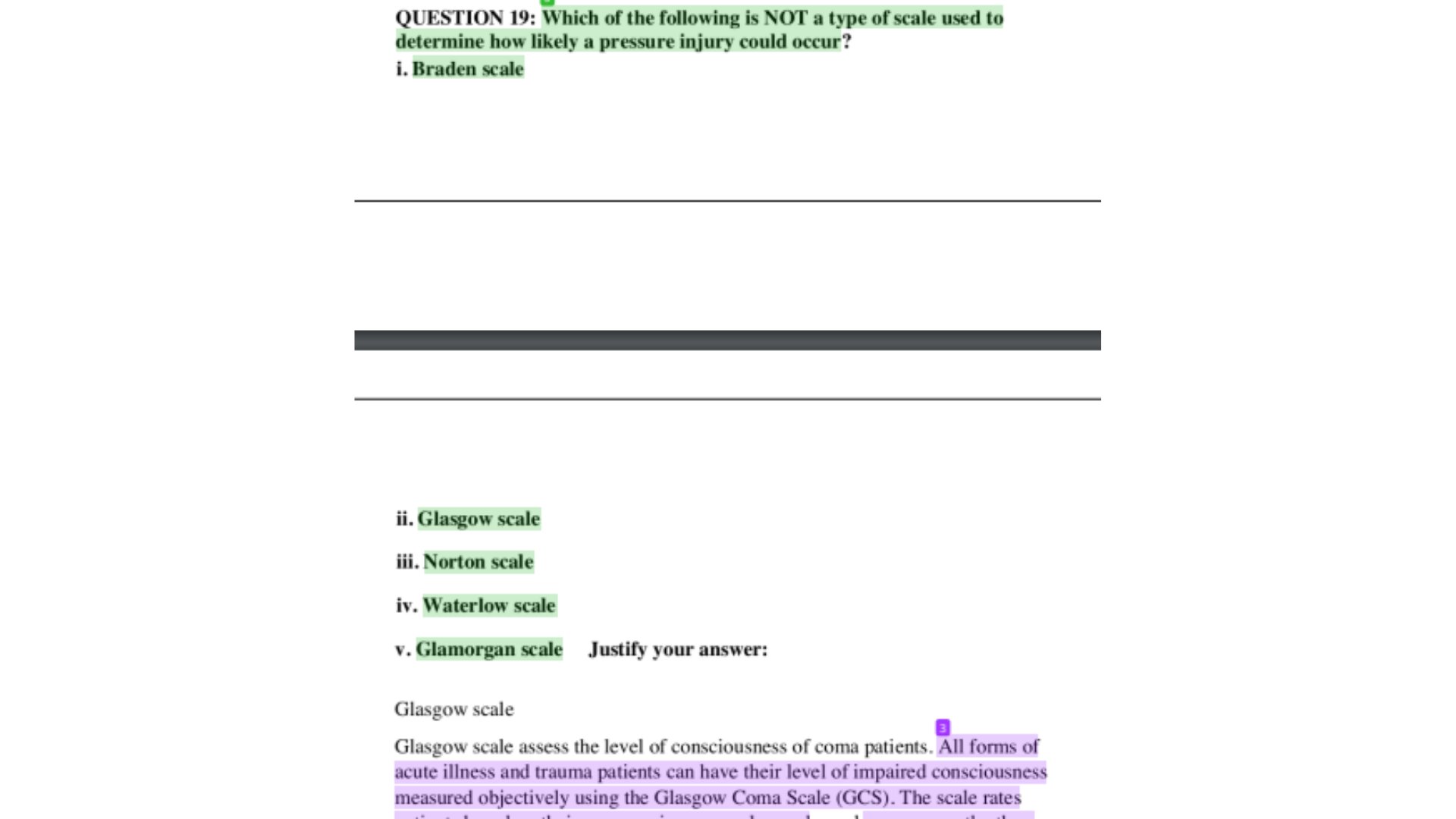
Question 20
Here, our experts have listed infection, poor nutrition, and chronic diseases, discussing how infection delays healing by causing inflammation and tissue damage.
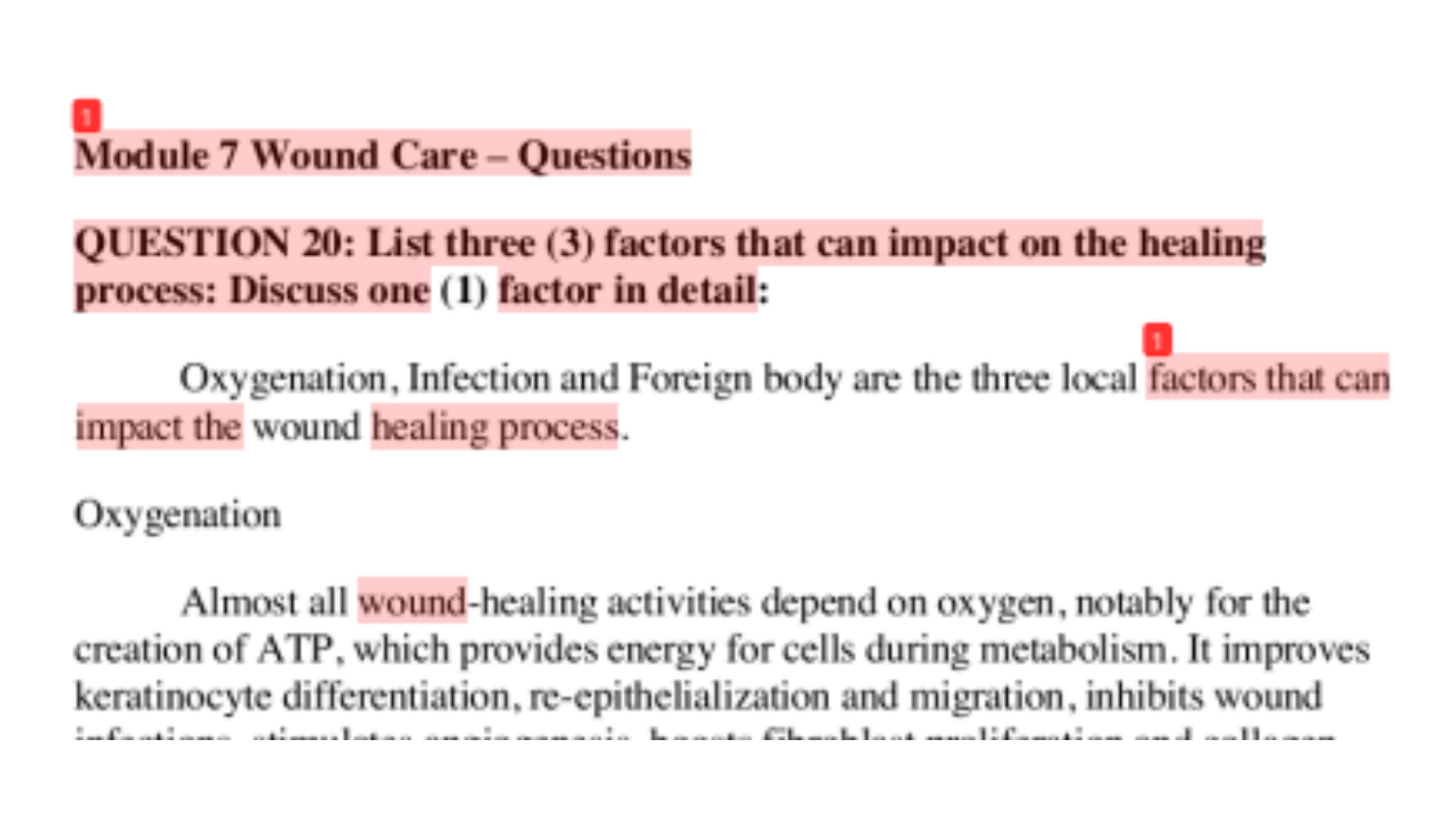
Question 21
Here, it has been suggested that a patient with a covered, dry necrotic wound is receiving care from a nurse. The student is supposed to remark on the kind of bandage would be most appropriate for this kind of wound.
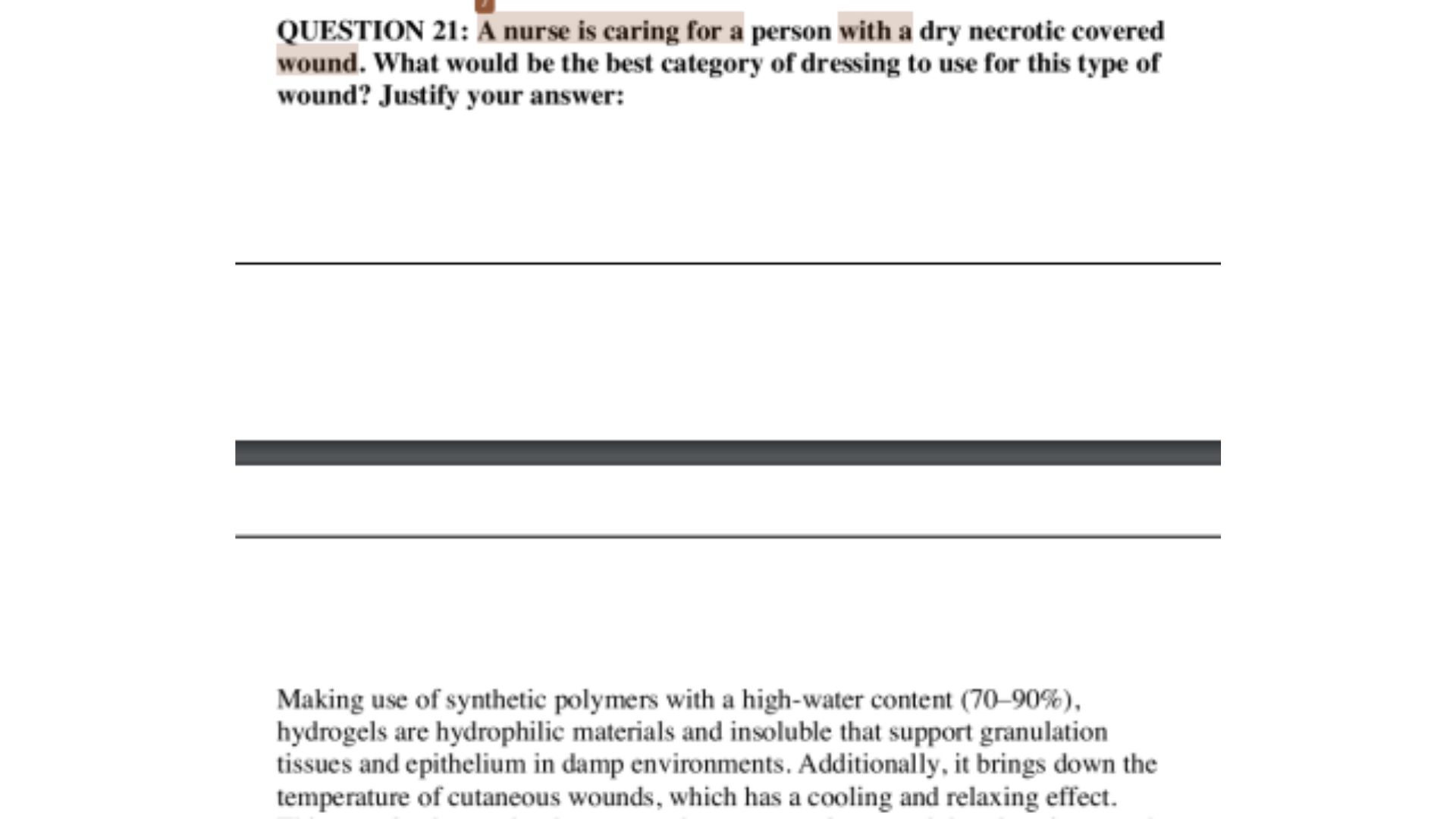
Question 22
Our experts have highlighted the comprehensive approach required when assessing a wound. Our experts have identified additional essential component of a wound assessment in addition to the evaluation of the wound itself in this section, a snippet of which you can read below:
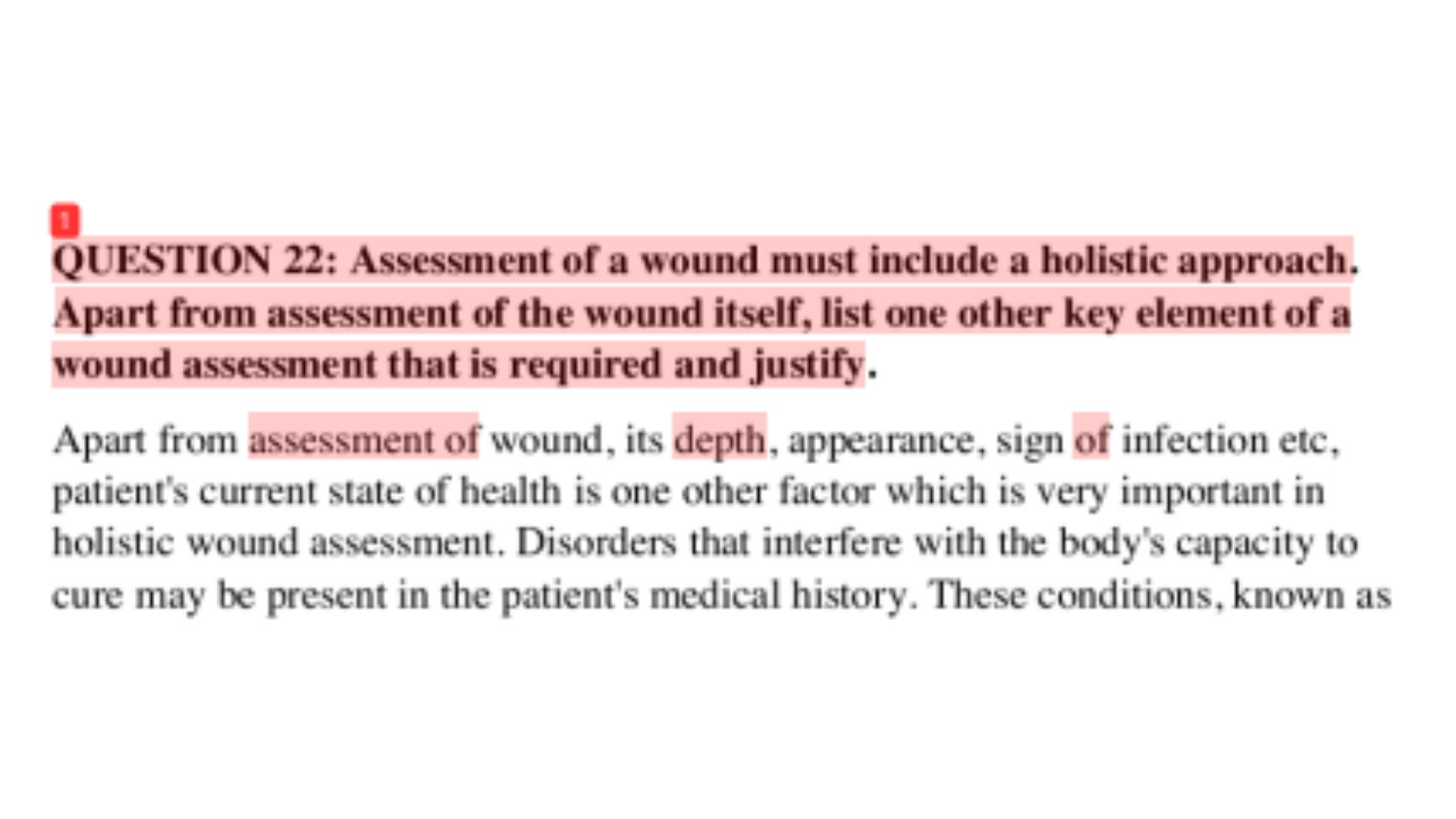
We observed you searching for QUT Nursing Assignment Help Online. Let us help you. Reach out today- onlineassignmentservices1@gmail.com.

